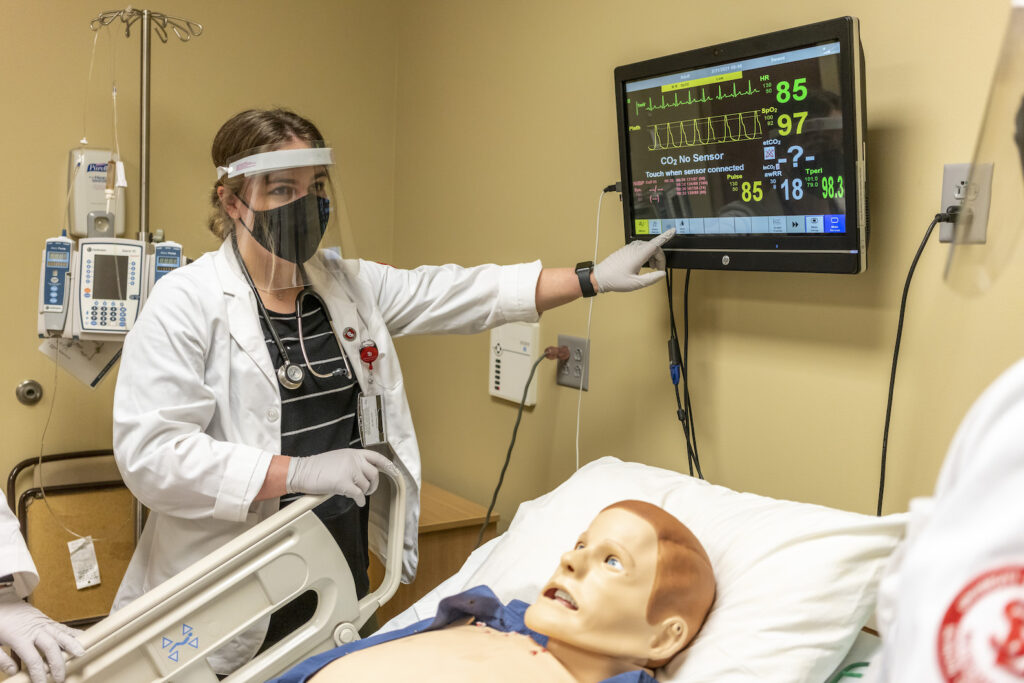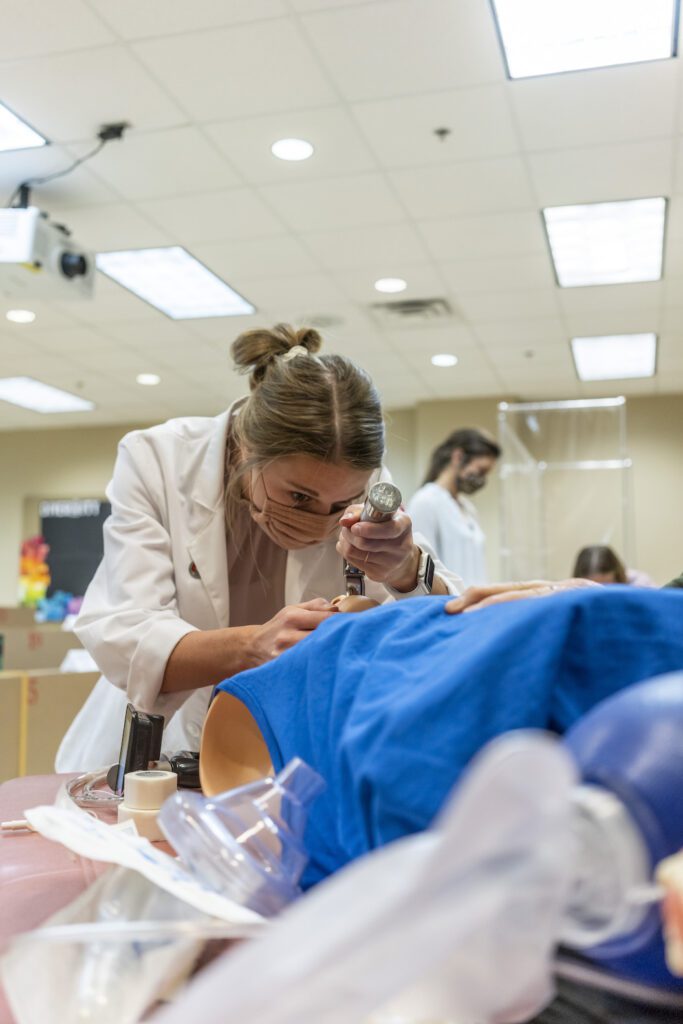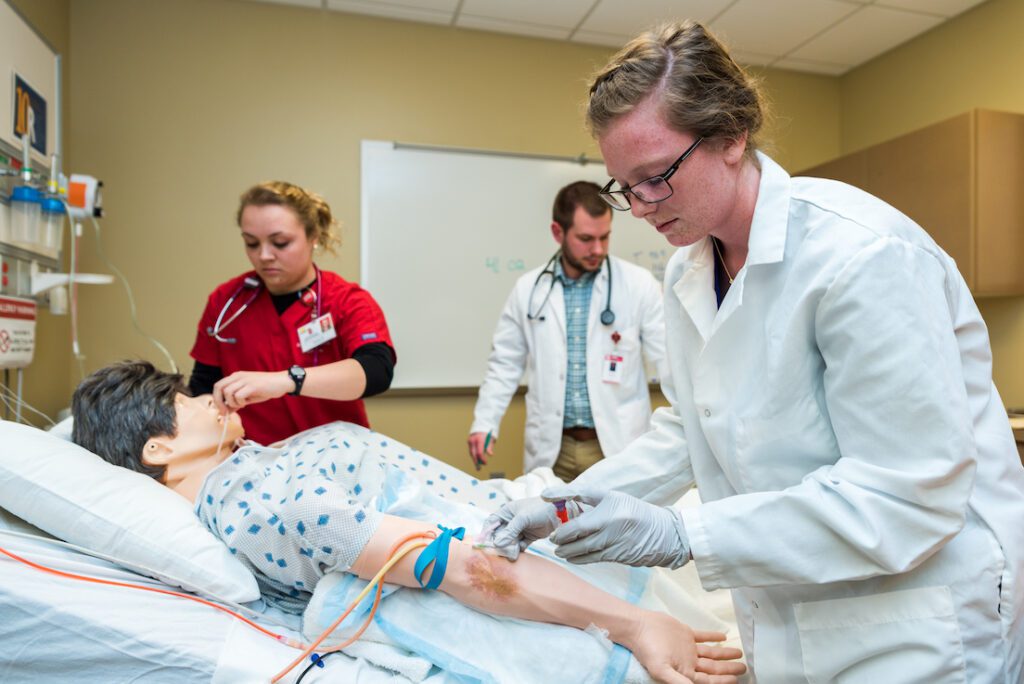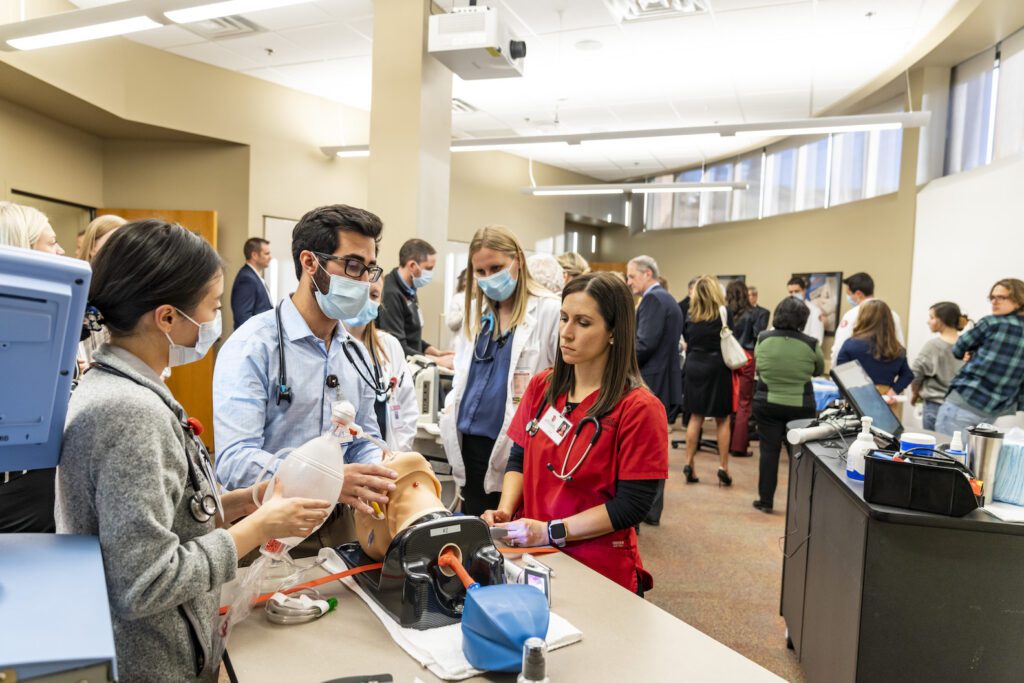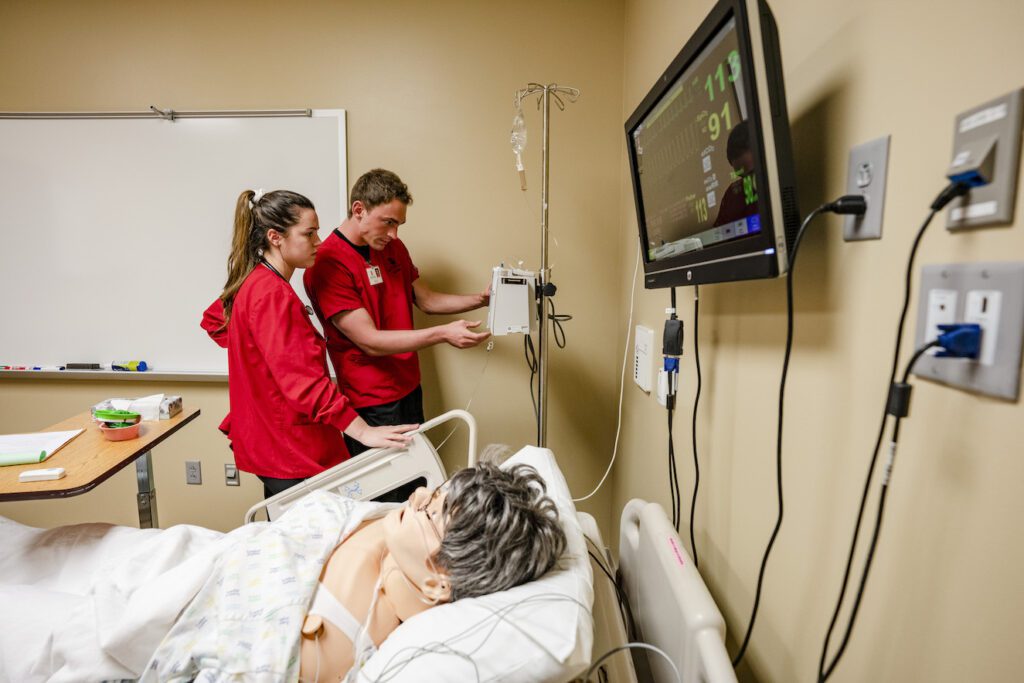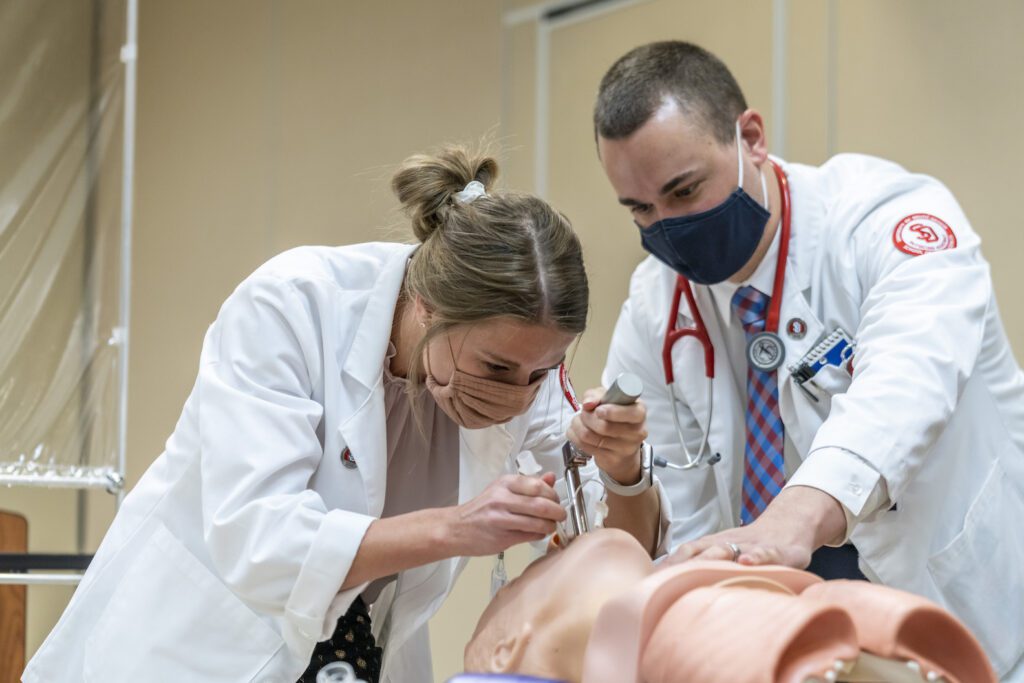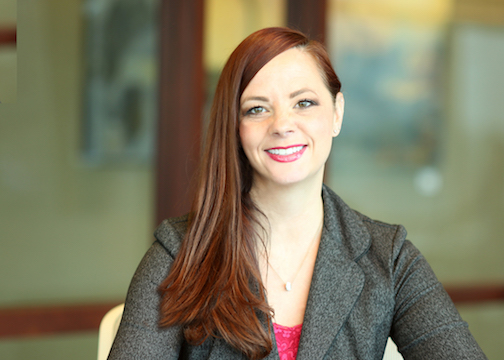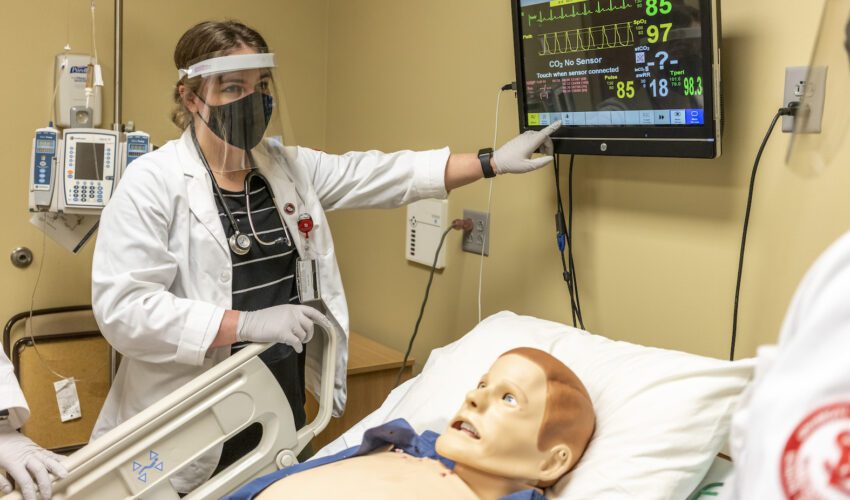Future medical professionals prepare for careers with state-of-the-art simulations
Feb. 21, 2022
This paid piece is sponsored by the University of South Dakota.
Picture this: A USD nursing student stands over a lifelike manikin that has an advanced computer system that simulates real-life conditions and reactions to medicine in the heart, lungs, stomach and more.
The student begins performing a procedure, speaking with the manikin and explaining the work.
Also in the room is an actor, playing the role of the manikin’s family member. Behind a thick wall of mirrors sits the instructor, observing the student and remotely operating the manikin.
As the nursing student continues, the manikin “says” something isn’t feeling quite right.
Suddenly, the machines begin to beep – there is an emergency. The nursing student pushes a button, alerting the additional members of the coordinated care team, consisting of medical, physician assistant, occupational therapy and social work students. Seamlessly, the team works together to assess the situation and administer care, each fulfilling an essential role. The social work student leads the family member out of the room. The medical student reads the machine’s reports to determine the best treatment plan. The nursing student calmly prepares the manikin for the procedure.
“High-fidelity simulation gives students the most realistic representation of the medical condition as they would see on the human patient,” said Dr. Valeriy Kozmenko, director of the USD Parry Center for Clinical Skills and Simulation. “It lets them practice without the risk of harming anyone. We can also run the simulation as many times as needed for students to gain confidence and become experts in their field.”
At USD, students have access to two state-of-the-art simulation centers that allow for collaboration among students: the recently expanded and remodeled Nursing Center for Simulation and Interprofessional Development, located in USD’s Lee Medical Building on the Vermillion campus, which also houses the largest cadaver lab in the state; and the Parry Center for Clinical Skills and Simulation, located at the USD Sanford School of Medicine’s Sioux Falls campus — the only accredited simulation center in the state.
Within the simulation centers, students in the USD School of Health Sciences and Sanford School of Medicine learn, study and practice as coordinated teams, replicating modern hospital and clinic environments that are embracing the interprofessional approach to health care.
“Our simulation training is designed to not only help with the technical skills of each student, but to also bring those students together and teach them how to interact with each other,” said Dr. Tim Ridgway, vice president of health affairs and dean of the Sanford School of Medicine. “Our students act as a comprehensive health care team, offering their expertise toward one goal: optimal care of the patient.”
It’s an everyday occurrence to see medical students working with nursing students, social work students collaborating with physical therapy, physician assistant and dental hygiene students, and so on. These interprofessional education experiences help students learn how to provide comprehensive, patient-centered care.
“Interprofessional education taught me that it’s not just one department that the patient and their treatment depend on – it’s all departments as a team,” medical laboratory science student Camyron Ballard said. “The better the team is in combining their own specialties, the better care we can provide for the patients.”
No other health education institution in South Dakota offers its students the opportunity to learn in simulation settings with so many other health care disciplines.
“Because of my experiences with interprofessional education at the Parry Simulation Center, I have been able to step into countless interdisciplinary teams and contribute in a meaningful way,” said Nate Blaseg, a fourth-year USD medical student. “Learning with and from other health profession students gave me a better perspective on the various areas of expertise that exist within a health care team. The opportunity to grow in our leadership and communication skills in a controlled environment without the risk towards patient safety has been both clinically beneficial and, honestly, pretty fun.”
Simulations and interprofessional education maximize student learning and prepare students to be job-ready when they graduate.
“USD has strong ties to the health care systems across the region, so we understand the needs and demands of the industry, and what they need now is practice-ready professionals who are adaptable and confident,” Ridgway said. “At USD, we provide our students with the tools needed to thrive and be leaders in their profession. If you’re a student looking to be a health care provider of any kind, there’s no better education than at the University of South Dakota.”
USD’s School of Health Sciences is a national leader in interprofessional health sciences education. South Dakota’s most comprehensive School of Health Sciences develops exceptional practitioners, leaders and scholars who advocate for and improve the well-being of all people, particularly those in rural and underserved communities. The school offers several programs at the bachelor’s, master’s and doctorate levels, including addiction counseling, dental hygiene, nursing, nurse anesthesia, medical laboratory science, occupational therapy, physical therapy, physician assistant, public health and social work.
USD’s Sanford School of Medicine is nationally known for excellence. With its award-winning curriculum, the school prepares medical students to practice in all fields of medicine and is particularly recognized and ranked for its reputation in family medicine and rural medicine. In addition to the M.D., it offers graduate degrees in basic biomedical science, sustains a vibrant and forward-looking research agenda and is home to the interdisciplinary Center for Brain and Behavioral Research.

